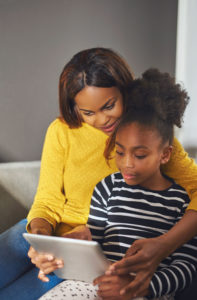
A BuzzFeed News analysis of “news” stories during the final three months of the 2016 US presidential campaign revealed that on Facebook, the 20 top-performing fake-news stories from hoax sites and hyper partisan blogs generated 8,711,000 instances of engagement (shares, reactions, or comments) while the 20 top-performing stories from news web sites generated 7,367,000 instances of engagement (1). Basically fake news generated 1.5 million more responses than real news.
This is particularly concerning given that a Pew Research study from July 2016 indicated that 63% of Americans say that family and friends are an important way they get news—they get their news from their social networks (online or offline) rather than from vetted broadcast or print media (2), and 54% of people asked in this same study responded that they “sometimes” or “often” received news from social networking sites such as Facebook or Twitter.
I too must confess that quite often it’s a tweet or a Facebook post that alerts me to a news story or world event. Often it’s even a tweet or a post that leads me to the latest science news. I can’t remember the last time I deliberately watched the 6:00 news, though it was a staple in my house when I was growing up.
So what does all of this mean for science communication, science literacy and a basic understanding of what is really going on in the world?
As a science writer at Promega and the point person for our social media efforts, I have mixed feelings about these trends. In some ways, I applaud that publishing has become more open, because there are wonderful voices and perspectives that I would have never heard if not for blogs and the ability of social media to amplify these writers’ work. Through social media, I have met a host of science writers, researchers and Promega customers, whom I never would have encountered any other way. My life has been enriched by these voices.

I am excited about the possibilities that social media bring to the world of science communication—the ability to share data sets among scientists more freely and to get science commented on by a large community rather than three anonymous reviewers who serve as gatekeepers to publication in major journals. I also see the pitfalls of science that gets pitched by press release or documentary and tweeted widely before it is vetted by other scientists, and I have written about some of those issues before.
Just as the scientific journal is designed to provide some quality control to the science that reaches the public, professional news organizations serve the same function when reporting news. Journalists, particularly science journalists, are trained to vet sources and to write well. They have ethical codes of conduct. They are supported by staffs of fact-checkers. They know that truth does not necessarily equate to equal time for every opinion. There are consequences for publishing stories with egregious errors and falsehoods, so there is some commitment to quality. Traditionally they have even been able to distinguish between news reporting and editorializing. Fake news sites and even well-meaning citizen journalists are bound by none of these constraints and supported by none of these resources or training.
So what do we do? How does society keep the richness and diversity of voices that free media like blogs and social platforms create while maintaining quality, accuracy and credibility?
Responding to Bad Journalism—from amateurs or professionals
One thing is clear, critical thinking skills are essential.
A study by Stanford University scientists revealed that 82% of middle school students didn’t understand the difference between “sponsored content” (ads) and real news stories on web sites (3). In the same study, students also didn’t understand the potential conflict of interest that existed in a post about financial planning written by a bank executive (3). [Though I submit is possible for a bank executive to write an extremely valuable and informative post about financial planning that does necessarily hawk a product.] Further, the students made conclusions about stories based solely on viewing headlines and pictures without reading the content of articles or following the linked stories(3).
I don’t know that new media are any different from traditional media when it comes to evaluating content. We have always been faced with things like “advertorials” that look like news articles; the testimonial from the doctor who is a paid spokesperson and fails to disclose that relationship; the article citing the work of the expert from Harvard (Harvard, IL, that is), or the quote pulled out of context to change meaning just enough.
So what do we do?
I propose that we adopt a critical thinking, scientific approach to evaluating information.
Step one is simply being aware that all content is created by humans, and humans are biased, emotional creatures. Scientists readily admit this—that is why good experiments include multiple positive and negative controls and are performed repeatedly in an attempt to generate data that are as free from bias as possible.
Reading a story from many diverse viewpoints is like performing those controls. Reading the pro, the con, the somewhere in the middle viewpoints is more likely going to leave you with a better picture of what really took place.

Step two is teaching people to ask those old journalistic questions: Who, what, when, where, how and why? Often asking those questions as we read reveals inconsistencies or holes in a story.
You can ask them not only about the content of the story, but about the story itself: Who wrote it? Why? When? NPR has a great article about evaluating authenticity of online sources that gives solid information about URLs, reverse image checking, etc.
Ask yourself how does this article fit into the context of the larger body of knowledge (scientists ask this all the time)? What are the caveats or conditions? Where are the nuances?
Step three involves talking about what you read with as many other people, face-to-face, as possible. Scientists do this as well. They present preliminary data to colleagues in their department—they ask for alternative interpretations, explanations or artifacts they may have missed.
Your friends, family and coworkers may have read another source or heard another version of a story. What do they think? Do they have experiences or knowledge that challenge the story in ways you haven’t considered?

Step four is educating the next generation. If you have a family, talk about stories with your children, model critical thinking every day for them, and let them challenge your beliefs. You can learn a lot from your children, and if they see that you are open to new thoughts, ideas and factual evidence, they will be too.
To be an informed, critically thinking, smart society, we have to practice, and now is a good time to start.
References
- Silverman, C. (2016) This analysis shows how fake election news stories outperformed real news on Facebook. BuzzFeed News [Internet https://www.buzzfeed.com/craigsilverman/viral-fake-election-news-outperformed-real-news-on-facebook Accessed: Dec. 5, 2016]
- Mitchell, A. et al. (2016) The Modern News Consumer: News attitudes and practices in the digital era. Pew Research Center Journalism & Media [Internet: http://www.journalism.org/2016/07/07/the-modern-news-consumer/ Accessed: Dec. 5, 2016]
- Shellenbarger, S. (2016) Most students don’t know when news is fake, Standford study finds. The Wall Street Journal [Internet: http://www.wsj.com/articles/most-students-dont-know-when-news-is-fake-stanford-study-finds-1479752576 Accessed Dec. 6, 2016]
Michele Arduengo
Latest posts by Michele Arduengo (see all)
- An Unexpected Role for RNA Methylation in Mitosis Leads to New Understanding of Neurodevelopmental Disorders - March 27, 2025
- Unlocking the Secrets of ADP-Ribosylation with Arg-C Ultra Protease, a Key Enzyme for Studying Ester-Linked Protein Modifications - November 13, 2024
- Exploring the Respiratory Virus Landscape: Pre-Pandemic Data and Pandemic Preparedness - October 29, 2024
